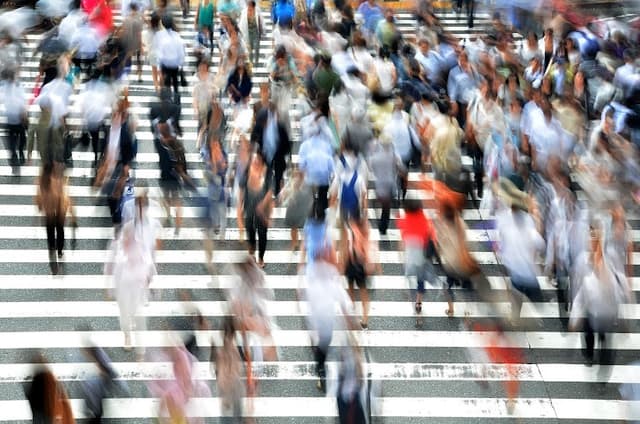Myths about teaching can hold you back
Learn why
Lesson 3 of 6
- Year 8
Creating and developing movement material
In this lesson, we will learn a phrase that uses pedestrian actions and then develop the material using motif and development techniques.
Lesson 3 of 6
- Year 8
Creating and developing movement material
In this lesson, we will learn a phrase that uses pedestrian actions and then develop the material using motif and development techniques.
These resources were made for remote use during the pandemic, not classroom teaching.
Switch to our new teaching resources now - designed by teachers and leading subject experts, and tested in classrooms.
Lesson details
Key learning points
- Pupils will learn to create and develop movement material using pedestrian movement.
- Pupils will demonstrate the ability to create a short phrase based on a piece of poetry that provided the stimulus for Infra.
- Pupils will explore pedestrian movement qualities. To develop the material through appropriate and varied choices of uses of action, space and dynamics.
- Pupils will identify strengths in work and suggest ways in which to further improve the work.
- Pupils will learn about creativity, self-awareness, independence, problem solving and decision making.
Equipment
Copy of 'Under the brown fog of a winter dawn / A crowd flowed over London Bridge, so many.' T.S. Eliot, device to play music (e.g. phone or MP3 player), a 2x2m clear space, suitable clothing.
Content guidance
- Physical activity required.
Supervision
Adult supervision recommended
Licence
This content is made available by Oak National Academy Limited and its partners and licensed under Oak’s terms & conditions (Collection 1), except where otherwise stated.
4 Questions
Q1.Which description below matches the action in the image?
Which description below matches the action in the image?

Balancing
Dancing
Turning
Q2.Actions are described as:
Actions are described as:
How you use your energy and speed
Where you dance
Q3.Space is described as:
Space is described as:
How you use your energy and speed
Who you dance with
Q4.Dynamics is described as
Dynamics is described as
Where you dance
Who you dance with
7 Questions
Q1.Today you learnt about pedestrian movement used in dance. Tick the three examples of pedestrian movement from the four options below.
Today you learnt about pedestrian movement used in dance. Tick the three examples of pedestrian movement from the four options below.
Pirouette
Q2.Sticking with the theme of pedestrian movement, tick the three examples of pedestrian movement from the four options below.
Sticking with the theme of pedestrian movement, tick the three examples of pedestrian movement from the four options below.
Floor slide
Q3.There were 8 types of pedestrian movement discussed in the lesson. Tick the two remaining examples of pedestrian movement from the four options below.
There were 8 types of pedestrian movement discussed in the lesson. Tick the two remaining examples of pedestrian movement from the four options below.
Body popping
The splits
Q4.We changed the way our actions looked by:
We changed the way our actions looked by:
Choosing a new starting point
Making them look different
Starting again
Q5.We changed the way we used the space by:
We changed the way we used the space by:
Moving around more
Re-ordering repeating or re-sizing
Speeding up the movement
Q6.We changed the way we used dynamics by:
We changed the way we used dynamics by:
Re-ordering, repeating or re-sizing
Using pedestrian actions
Walking
Q7.We can evaluate how effective our choreography is by:
We can evaluate how effective our choreography is by:
Listening to the music
Rehearsing the movement over and over
Writing down the steps

